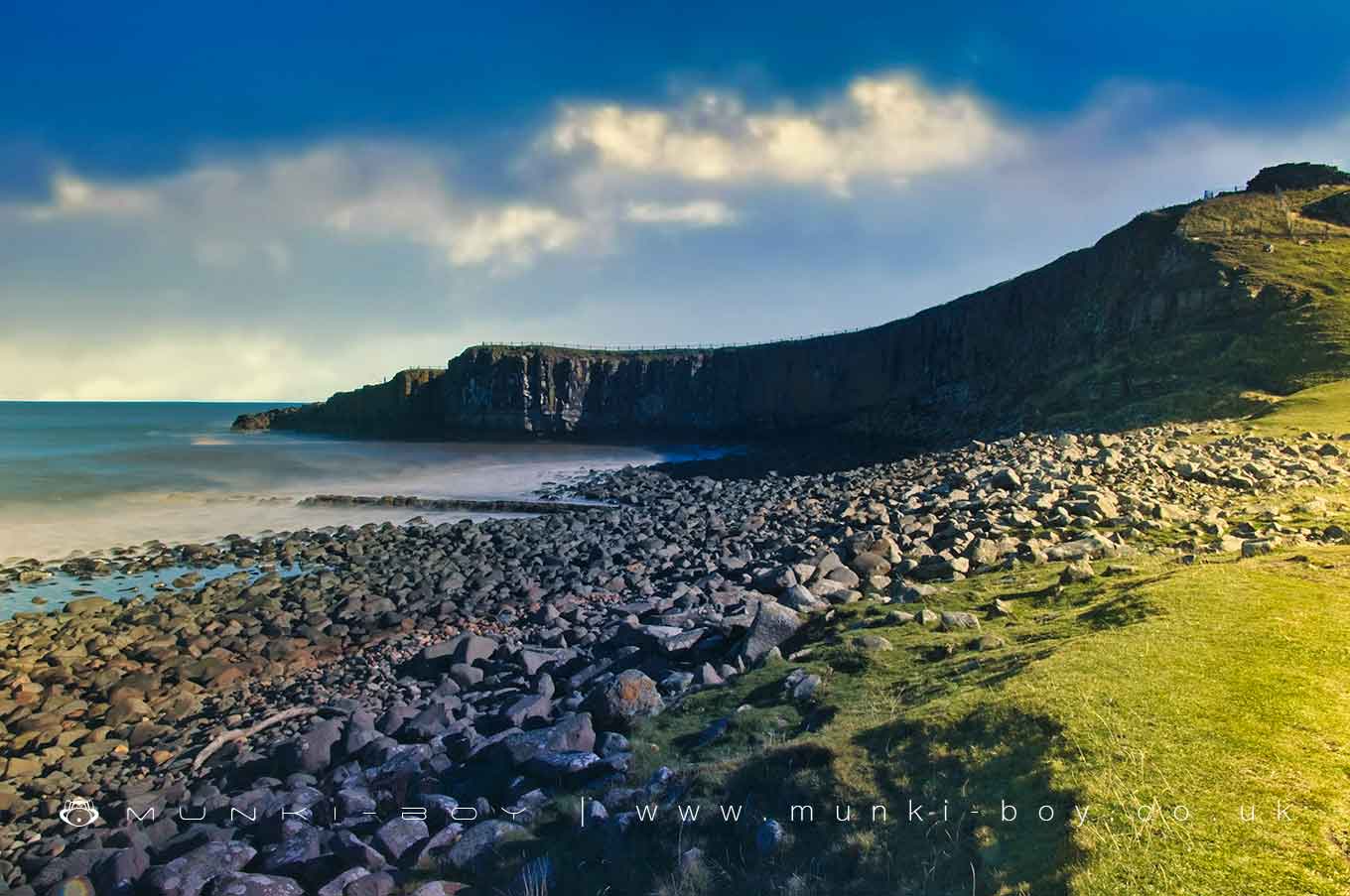Gull Crag and the Rumble Churn

A massive outcrop of the Whin Sill igneous intrustion on which stands Dunstanburgh Castle.
A Sill is the name for a geological process where a sheet of magma (molten rock below ground) is forced at high temperature and under massive pressure between pre-existing layers of rock strata. Think of a volcano but the molten rock went sideways (rather than exploding upwards) in the form of a horizontal sheet of many miles. These massive events happened here around 300 million years ago.
As igneous rock (in this case Dolerite) is generally much harder than the surrounding 'country' rock it is common to find massive igneous outcrops where the layers of softer rock have eroded away. As we can see here in the massive cliffs of Gull Crag, eroding much more slowly than the beach below.
The Rumble Churn is a small cove towards the end of Gull Crag, filled with churning water at the turn of the tide.
Gull Crag and the Rumble Churn Postcode:
England > Northumberland > North of Tyne > Craster > Dunstanburgh > Gull Crag and the Rumble Churn
